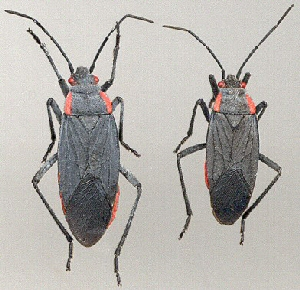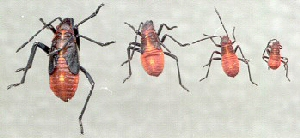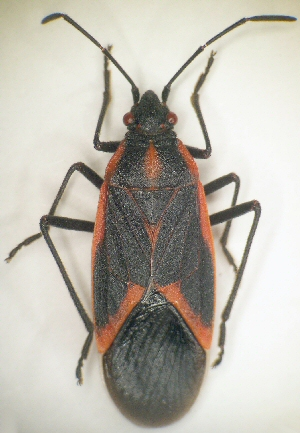Boxelder Bug, Redshouldered Bug
 Scientific Name
Scientific Name
Leptocoris (Boisea) trivittata, Jadera haematoloma
Host
The boxelder bug is found mostly on female (seed-bearing) boxelder trees. The redshouldered bug prefers chinaberry and golden rain tree. Both are occasionally found on ash, maple, and some fruit trees.
Symptoms
These bugs do very little damage to their host plants even when they are present in large numbers. They are primarily nuisance pests when they begin to seek overwintering quarters in the late summer and fall. At this time they may be found in large numbers around homes, on shrubs and trees, and in lawns. They commonly attempt to enter homes and other buildings for protection. Problems may also occur on warm days during the winter and when they leave their overwintering quarters in the spring. They do not cause damage in the home by feeding but may stain fabrics or walls if they are crushed.
Life Cycle

Description

Control
Please contact your local county extension office for current information.

